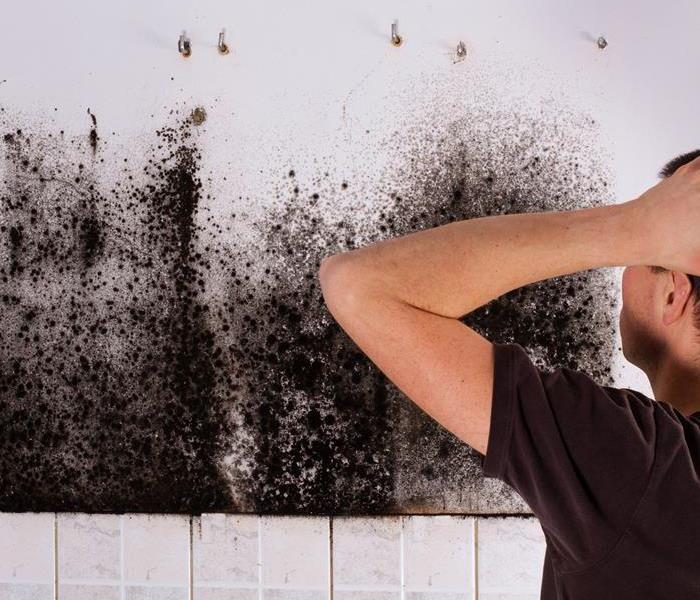Recent Blog Posts
Safety Tips in Case of a Business Fire
5/14/2024 (Permalink)

As a business owner, the safety of your employees and everyone else in your building is in your hands. Are you prepared to respond quickly in the event of a business fire? Follow these safety tips to ensure that you can answer that question in the affirmative.
1. Safety Features
Your two main sources of protection during a fire are your fire suppression system and your fire extinguishers. Have your fire suppression system, including alarm panels, fire doors and sprinklers, inspected regularly. Make sure you have enough working fire extinguishers to place one at least every 75 feet and that they are mounted properly.
2. Fire Codes
Your building is bound by both state and federal fire codes. Exits must be properly marked and the pathways to them unobstructed. Electrical plates must be used to cover all wiring so that none of it is exposed. Comply with all laws and make immediate changes when mandated by fire marshals.
3. Material Labeling
All potentially hazardous or flammable material must be stored properly. It is also essential to label liquids that could easily contribute to a business fire so that anyone who sees them knows what they are.
4. Evacuation Plan
Before firefighters can put out the fire and fire damage specialists can restore your building, everyone must vacate it. Having an evacuation plan helps everyone know what they’re supposed to do. This plan should be posted in prominent areas, especially around exits.
5. Evacuation Practice
Even the best plan is useless unless people know about it. Fire drills are a necessary part of fire preparation. Having a drill twice a year helps your employees practice fire safety plan so that they know what to do in case of an emergency.
The best business fire protection is preparation. Keeping your building up to code and enforcing safety measures can help you prevent most fires, and having a workable fire suppression system and evacuation plan can help get people to safety for the fires you can’t prevent.
The 3 Signs of Mold
5/14/2024 (Permalink)
Mold is a type of fungus that develops from tiny spores that float around in the air, both indoors and outdoors. Mold is often found in humid or moist places, and if allowed to grow unchecked, it can present issues for a building. With that in mind, we offer this quick list to help you identify mold is growing in your building:
1) Musty Odor
Even if you cannot see mold, it can be in your home or business. A very common indicator of the fungus is its smell. When mold grows in an area of your building, you will notice a pungent and musty smell. Take action immediately when you notice the odor. Mold overgrowth can cost you a great deal of money and even your health. You may not be aware of the full extent of the problem until professionals check in between walls and under floors.
2) The Appearance of Mold
Mold may look like cotton, granules, or leather. It can appear in various colors like white, green, gray, black, brown, or yellow. Unfortunately, many people ignore small mold and mistake it for soot or ordinary dirt. Take immediate action when you see tiny discolored and fuzzy growth on furnishings or the surface of building materials.
3) Water Leaks
If you notice water leaks from ceiling pipes, water stains, or standing water, mold might become an issue. Water leaks cause moisture, and that provides an excellent growing place for mold. Check for discoloration or watermarks on carpets, walls, and other materials for hidden mold.
Any business or home can face a fungus fiasco. If you suspect that you have a mold problem, SERVPRO® can inspect the property. Mold remediation is one of our specialties and we can eliminate the issue safely. We also invest in state-of-the-art equipment and continuous training that ensures your home or business is quickly and efficiently restored.
Give us a call today!
Storm Safety Tips
5/8/2024 (Permalink)
Depending on the season and your location, your business may be vulnerable to damage from intense rain storms, tornadoes or hurricanes. Following several key safety guidelines can help you protect your building and safeguard the wellbeing of your staff.
- Keep Trees Trimmed
Tree branches can become dangerous objects during strong winds. To minimize the risks of broken windows and roof damage, you should keep trees adjacent to your property neatly trimmed and routinely remove dead branches.
- Stay Away From Windows and Skylights
Flying debris can easily shatter windows and skylights. As a precaution, everyone should move away from these structures during a severe storm with high winds or hail.
- Elevate Essential Equipment
A significant rainstorm can increase the risk of flooding. If floodwaters enter your building, essential equipment, including components of your HVAC system, may be vulnerable to water damage. To alleviate this concern, you should elevate important devices off the floor.
- Move to an Internal Room
In the event of a tornado, seeking adequate shelter is essential. Your staff should promptly move to the basement or a windowless, interior room on the lowest level of the building.
- Avoid Using Electronic Equipment
Because cords conduct electricity, using electronic equipment during a thunderstorm can be dangerous. Staff should shutdown computers and avoid using phones until the storm has passed. As an added precaution, you should utilize surge protectors to safeguard vital equipment from potential damage.
- Inspect Your Roof
Hail and strong winds can wreak havoc on your building’s roof and cause damage that may lead to destructive leaks and potential mold contamination. For this reason, it’s a good idea to inspect your roof after any storm and promptly commence any necessary repairs.
A severe rainstorm can produce damaging high winds and cause extensive flooding. Taking proactive measures can help businesses avert serious injuries and minimize the risk of significant destruction.




 24/7 Emergency Service
24/7 Emergency Service


